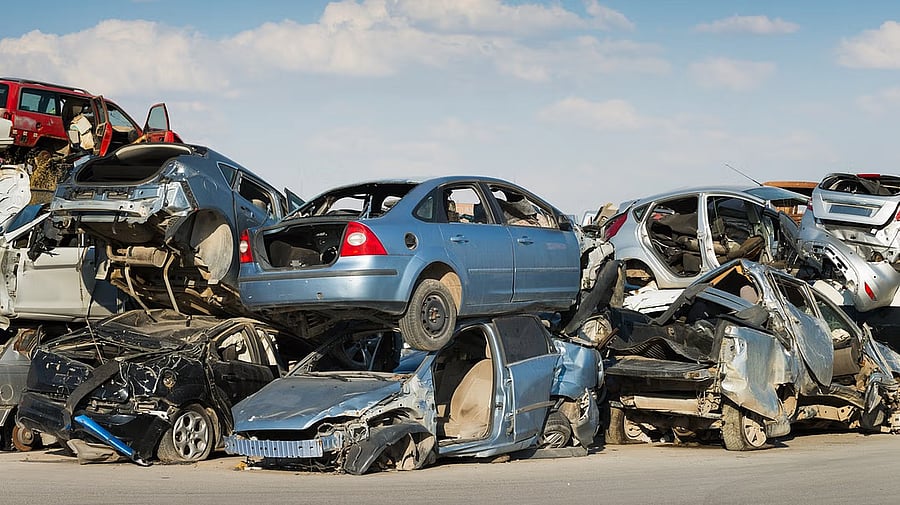
Scrap cars awaiting recycling. Representative image.
Credit: iStock Photo
The enforcement of Environment Protection (End-of-Life Vehicles) Rules, 2025 on April 1, as announced by the government, will mark the implementation of an idea that has for long been pursued. The rules mandate the scrapping of old vehicles that have reached the end of their life, paving the way for recycling of their parts and, more importantly, putting an end to a major source of pollution. The exhaust fumes from old vehicles pollute the air. Old vehicles are a financial drain too, as they consume more fuel and come with high maintenance costs. The revised rules apply to the producer, registered vehicle owners, registered vehicle scrapping facility, bulk consumers, and others who are involved in the scrapping process. The process has been laid out. It is the responsibility of the owner and the bulk consumer of the vehicles to get the vehicles tested. The owner should drop the vehicle at designated collection centres. Failure to comply with the provisions will attract compensation. The lifespan of vehicles has been fixed as 20 years for non-transport vehicles and 15 years for transport vehicles.
Producers have to fulfil the extended producer responsibility (EPR) through measures like buyback schemes or designate other entities to achieve their targets. Recycling is an important part of the process and the automobile industry has been set to recall at least 8% of the steel used in the vehicles. The annual target for the recycling percentage is set to increase over the coming years. The laws have prescribed ways of scrapping, dismantling, depolluting and segregating the vehicles. Hazardous and non-recyclable materials should be sent to waste treatment and disposal facilities. The rules are elaborate but the challenge is to implement them effectively.
The proposal has been under discussion for many years but delayed possibly because many conflicting interests are involved in the matter. The plan needs to be implemented now. It is estimated that the scrapping of old vehicles will lead to a reduction of air pollution by 20-25%. It will also lead to a substantial reduction in road fatalities. Recycling is expected to lead to a circular economy when new vehicles are bought in place of the scrapped ones. The automobile industry will gain if incentives are offered for the purchase of new vehicles. They can be in the form of discounts or vehicle tax concessions. The enormity of the challenge is evident from the estimated number of end-of-life vehicles – about 20 million.
